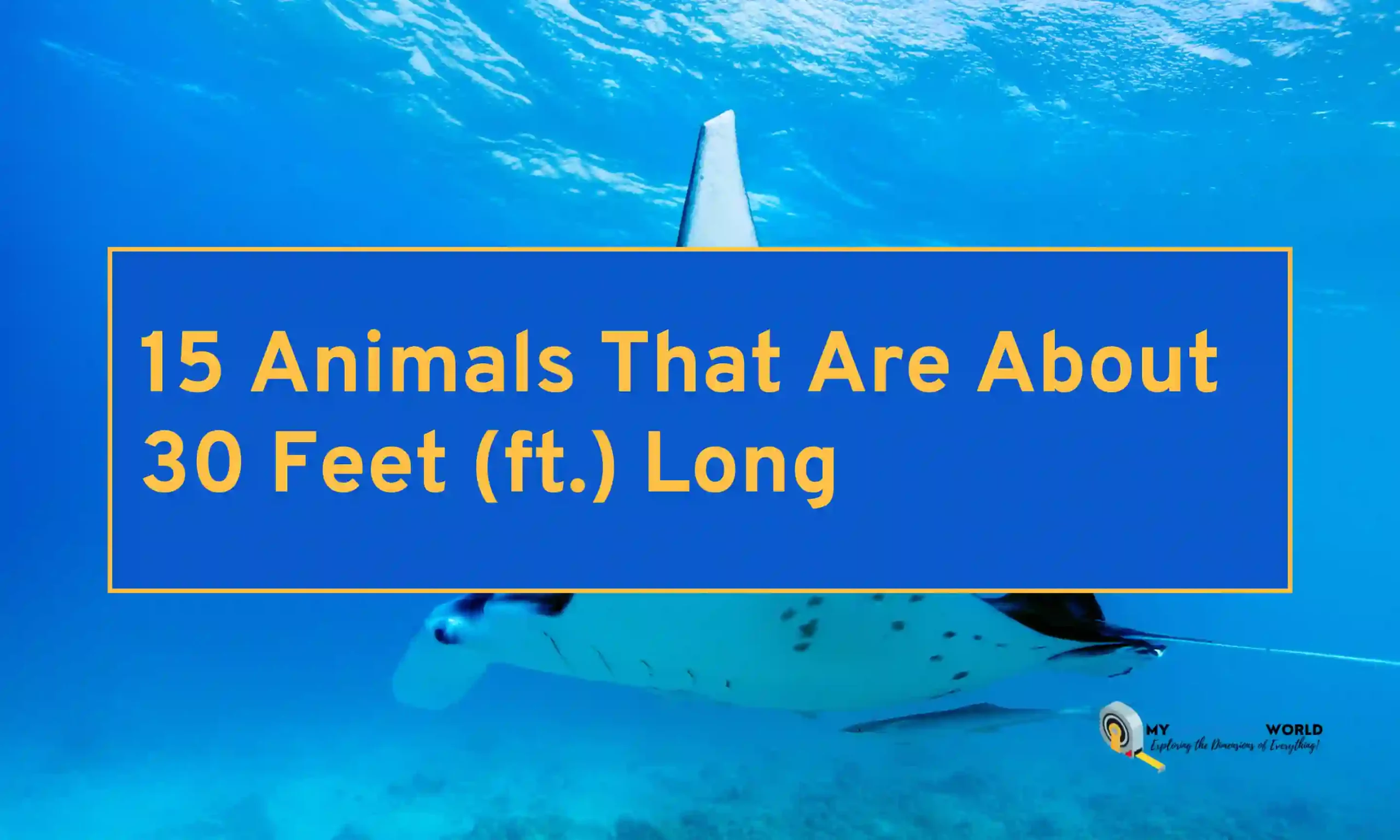If you are an animal lover and curious about how a certain animal size is then this post is for you. Today, we’ll be talking about 15 of the biggest animals out there which are around 30 feet long. So sit back, relax, and enjoy this list of impressive creatures.
1. Giant Manta Rays
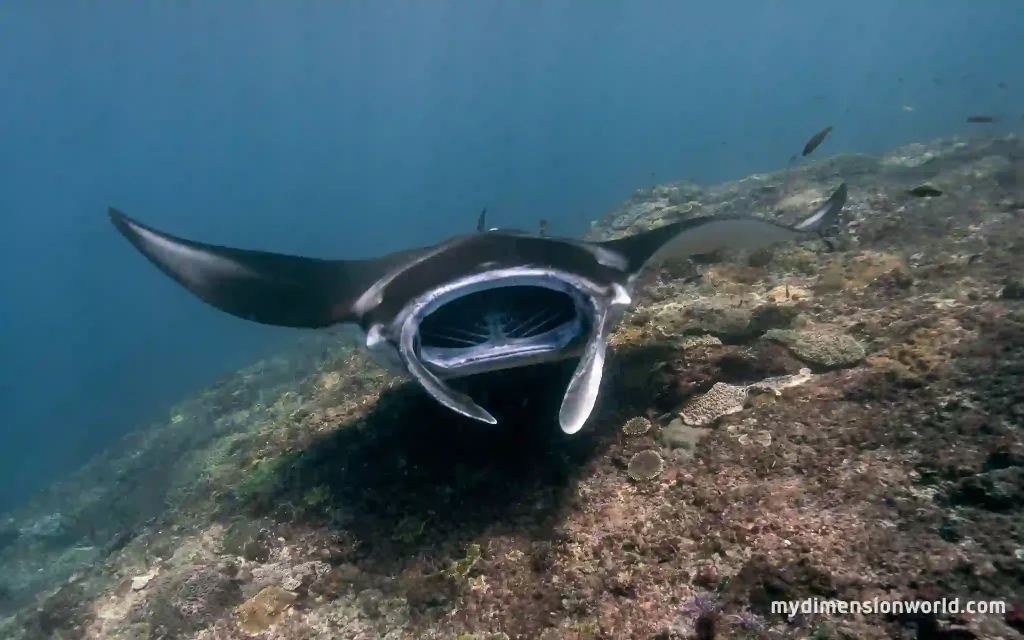

Giant manta rays are awe-inspiring creatures found in warm ocean waters. These marvelous animals can reach lengths of around 30 feet, with a wingspan of up to 23 feet.
They possess a distinct diamond-shaped body and are known for their graceful movements as they glide effortlessly through the water. Giant manta rays are filter feeders, consuming plankton and small fish.
2. Giant Pacific Octopus
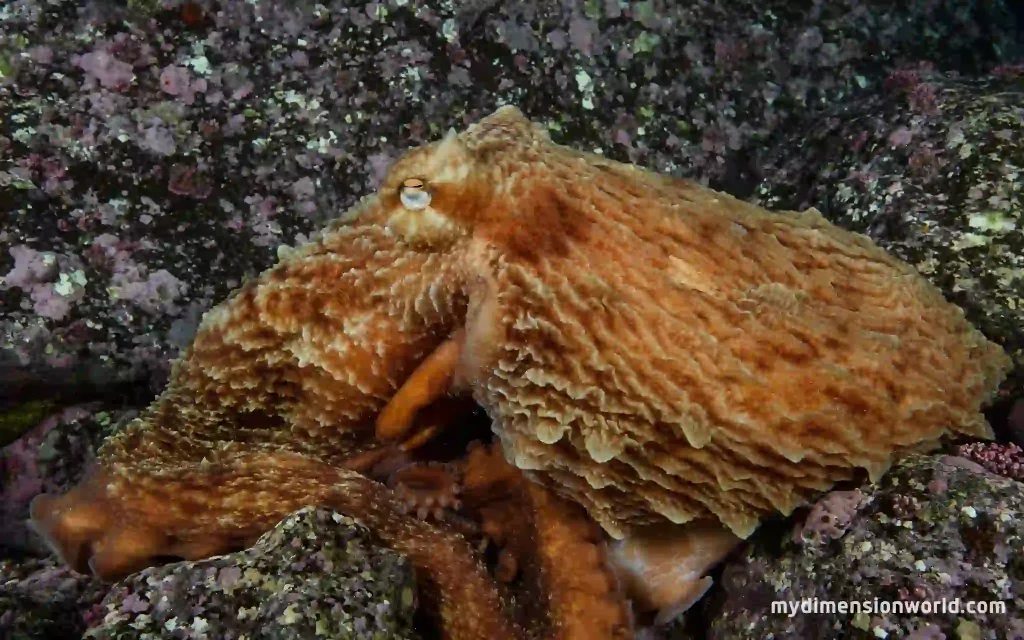

The Giant Pacific Octopus, scientifically known as Enteroctopus dofleini, is a creature that never fails to captivate the imagination. With its immense size and intriguing shape, this magnificent cephalopod holds a special place in the hearts of marine enthusiasts.
Measuring up to an astonishing 30 feet in length, this remarkable species showcases the impressive dimensions that nature can achieve.
Its body structure, characterized by a bulbous head and eight long arms adorned with suction cups, adds to its distinct appearance. The shape of the Giant Pacific Octopus, coupled with its incredible size, truly makes it a marvel of the deep sea…
3. Great White Shark
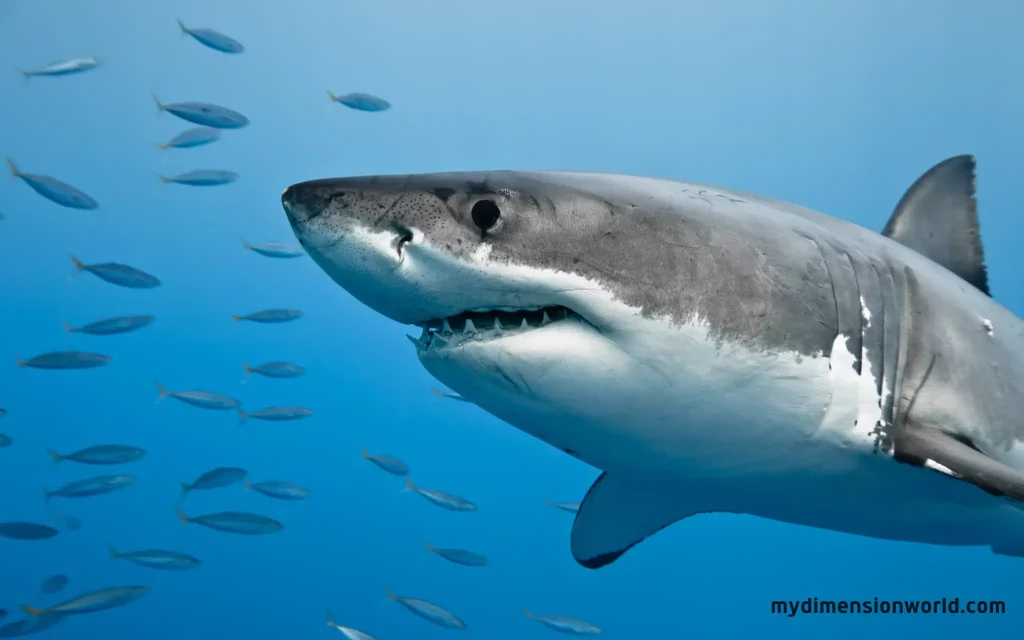

This animal is renowned for its massive size and powerful presence. Growing up to 30 feet in length, these formidable creatures have streamlined bodies, serrated teeth, and incredible swimming abilities.
Great white sharks primarily feed on seals, sea lions, and other marine mammals, making them one of the ocean’s top carnivores.
4. Arctic Python
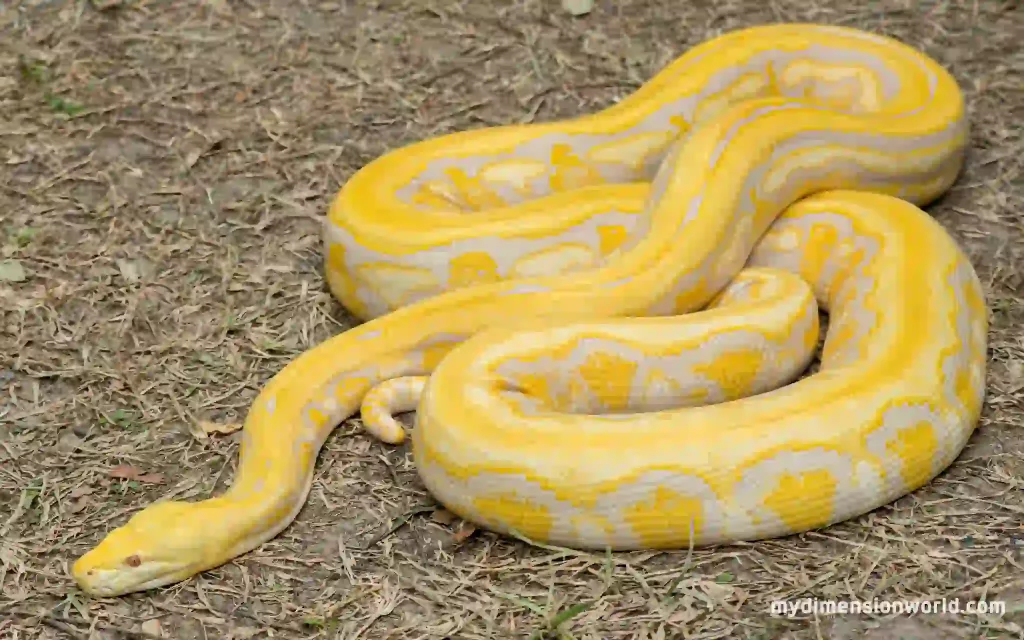

The Arctic python, also known as the polar python, is a massive snake found in the frigid Arctic region. Reaching lengths of approximately 30 feet, these cold-climate reptiles have adapted to survive in extreme conditions.
They have a thick, insulating layer of scales and rely on their powerful constriction to capture and consume their prey, which includes mammals and birds.
5. Green Anaconda
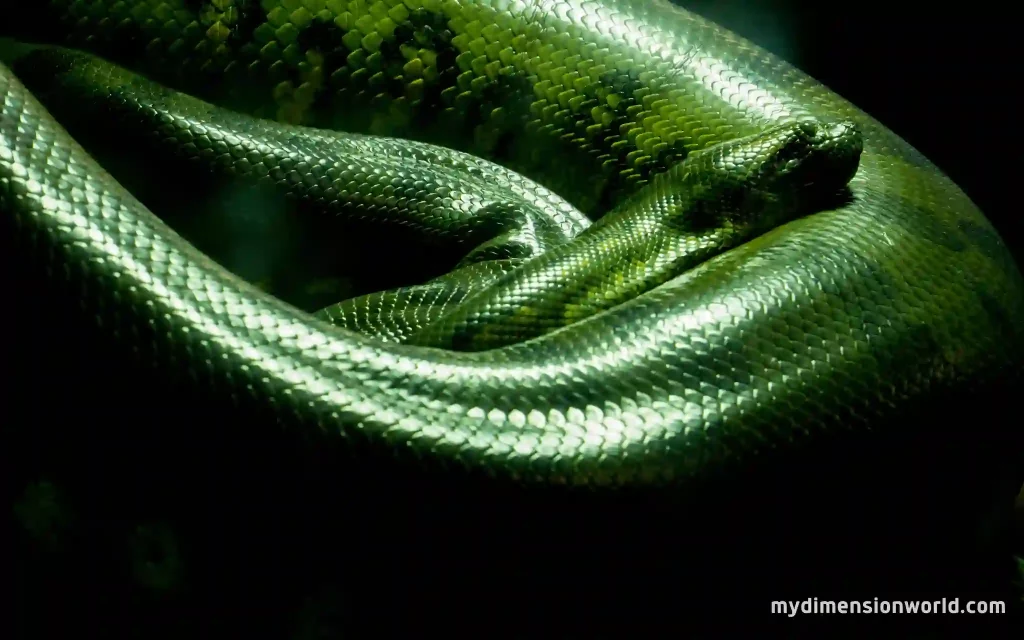

Yes, the green anaconda is one of the largest snakes in the world, capable of growing up to 30 feet long. This species thrives in the swamps and rivers of South America, using its muscular body to swim and constrict its prey. Green anacondas feed on a variety of animals, including fish, birds, and mammals.
6. Humpback Whale
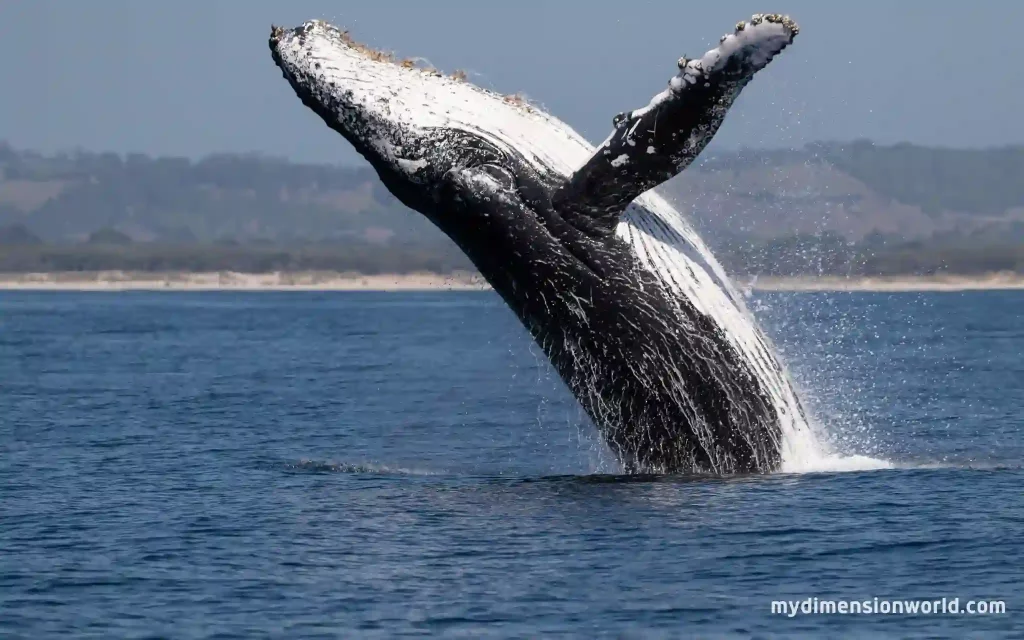

These gentle giants can reach lengths of around 50 feet, with a weight exceeding 30 tons. Humpback whales have distinct body features, including long pectoral fins and a series of bumps on their heads called tubercles. They feed on small fish and krill by employing a technique called bubble-net feeding.
7. Giant Squid
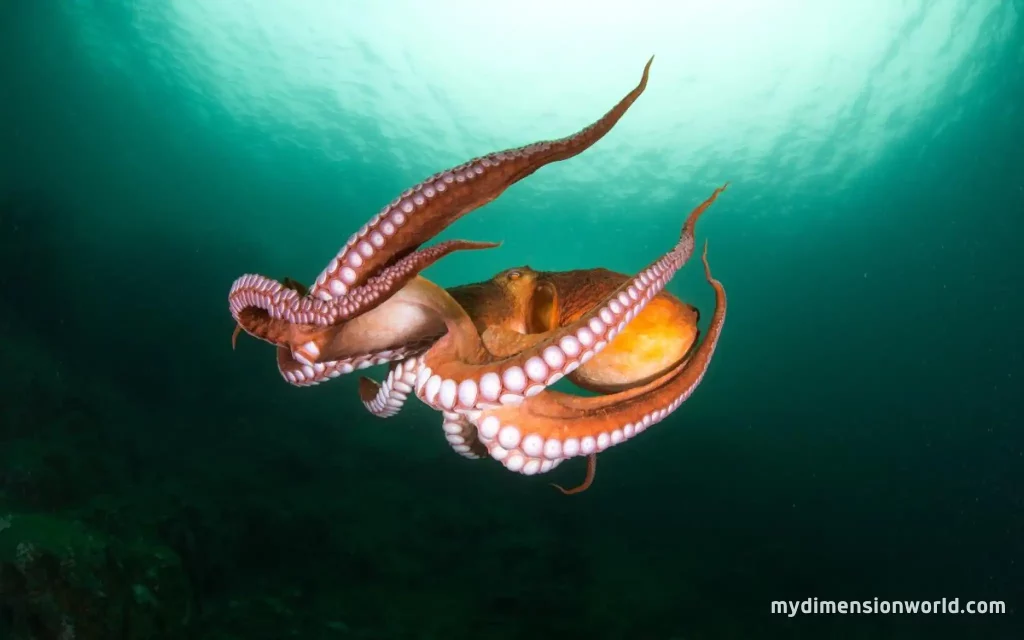

The giant squid is a legendary deep-sea creature that has fascinated humans for centuries. Growing up to 43 feet in length, these elusive creatures inhabit the darkest depths of the ocean.
With their massive eyes and long tentacles equipped with suckers and sharp hooks, giant squids are formidable hunters. They primarily feed on fish and other squid species.
8. Leatherback Sea Turtle
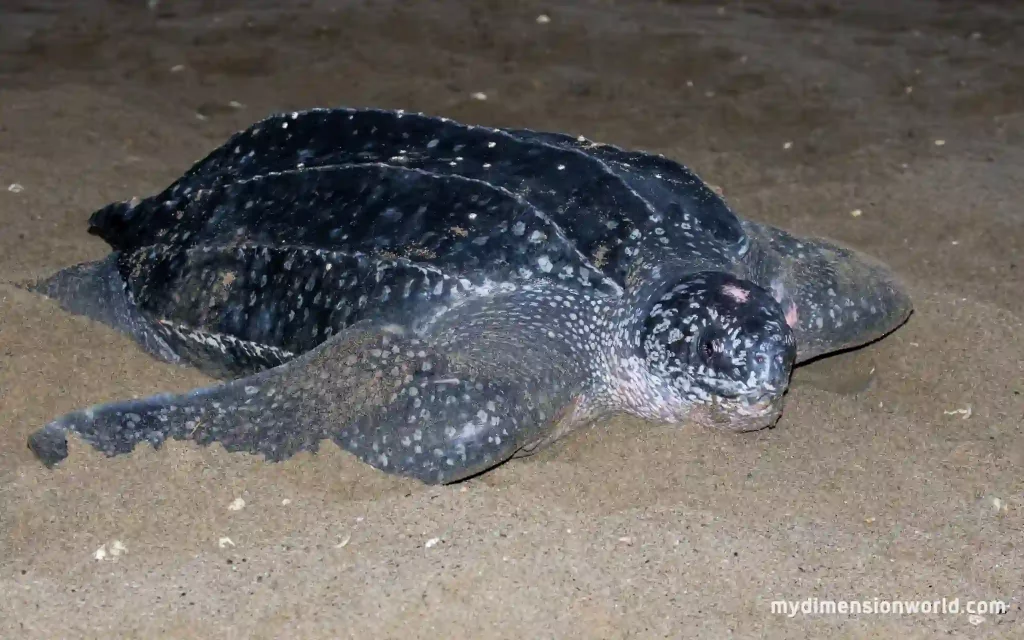

The leatherback sea turtle is the largest of all living turtles, capable of reaching lengths up to 7 feet and weighing over 2,000 pounds. These incredible reptiles are known for their unique leathery shell, lack of a bony carapace, and their ability to dive to impressive depths in search of their preferred food—jellyfish.
9. Fin Whale
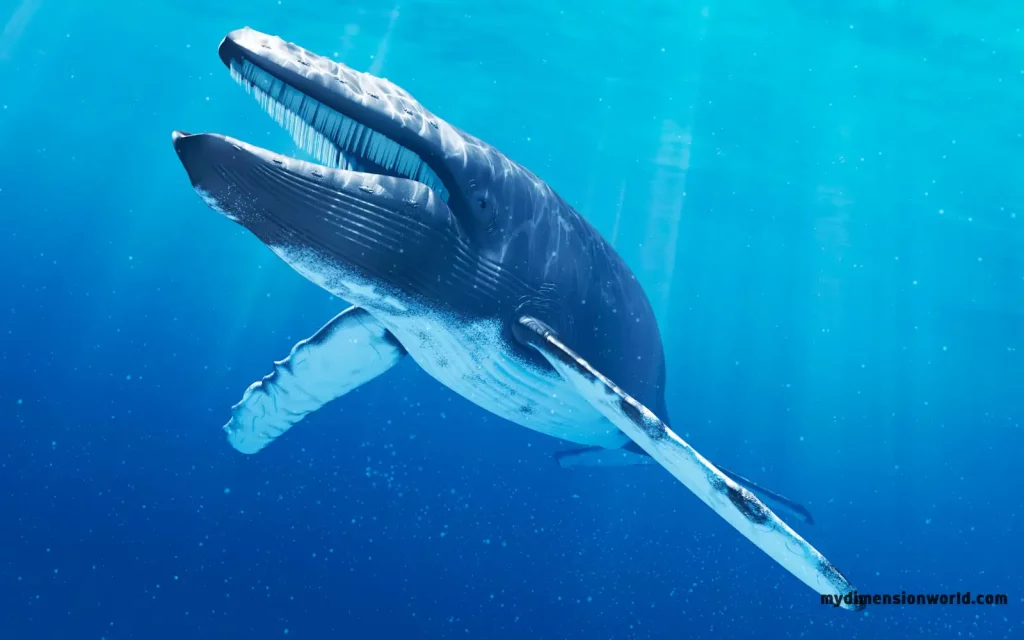

They also known as the finback whale, is the second-largest animal on Earth, reaching lengths of up to 80 feet. With its streamlined body and V-shaped head, this magnificent creature can swim at high speeds. Fin whales are filter feeders, consuming enormous amounts of krill and small fish using baleen plates in their mouths.
10. Oarfish
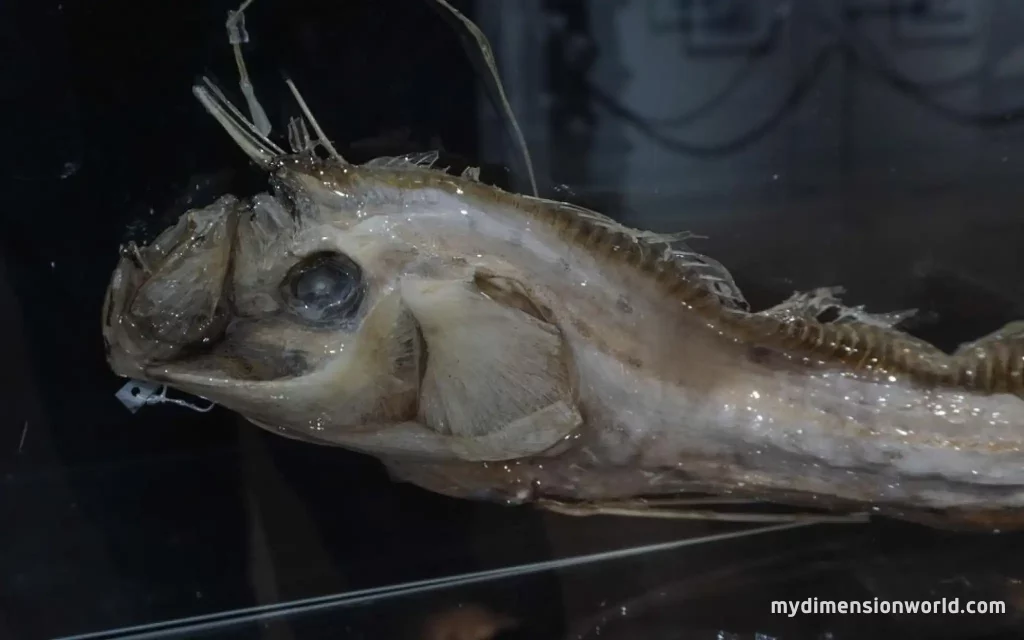

The oarfish is a mysterious and elongated fish that can grow up to 30 feet long. It is typically found in the deep waters of temperate and tropical oceans.
With its distinctive silver body and long, ribbon-like fins, the oarfish has often been associated with sea serpents. These fish are not commonly seen, and little is known about their feeding habits.
11. Saltwater Crocodile
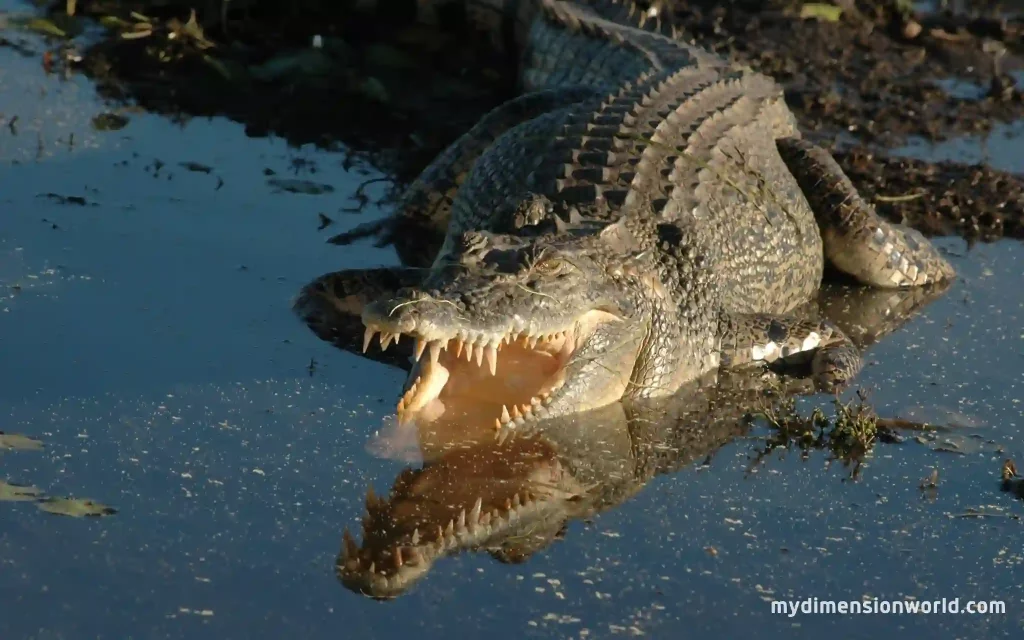

The saltwater crocodile, also known as the estuarine crocodile, is the largest living reptile and can reach lengths of up to 23 feet.
Found in the brackish waters of Southeast Asia, Australia, and the Pacific Islands, these fearsome predators have a powerful bite and ambush their prey near the water’s edge. They feed on a variety of animals, including fish, birds, and mammals.
12. Beluga Sturgeon
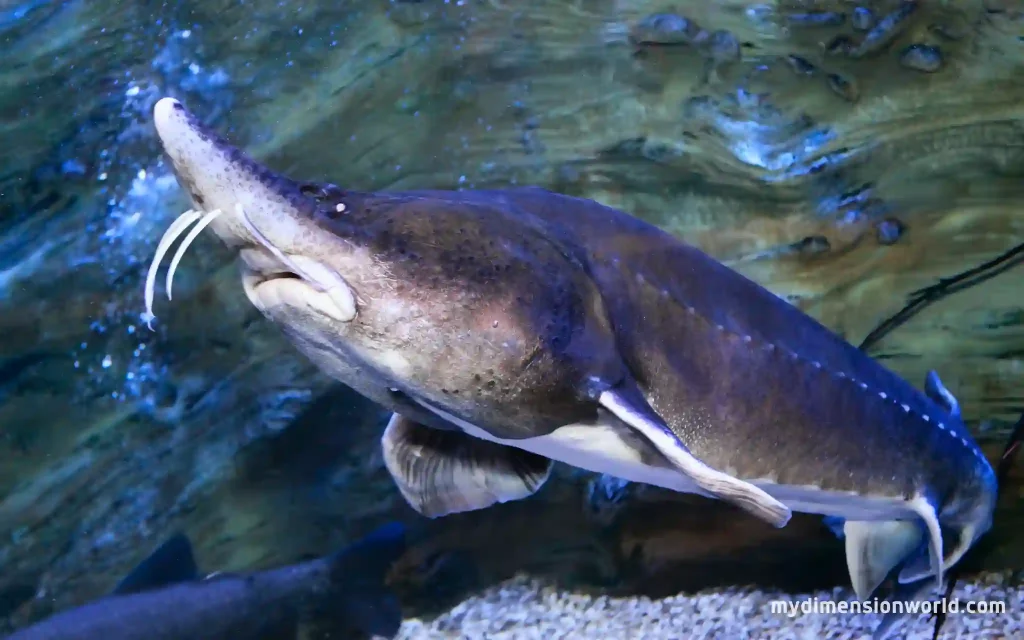

It can grow to lengths of 20 feet. Due to overfishing and habitat degradation, the beluga sturgeon is critically endangered, making it a species of great concern.
13. Sperm Whale
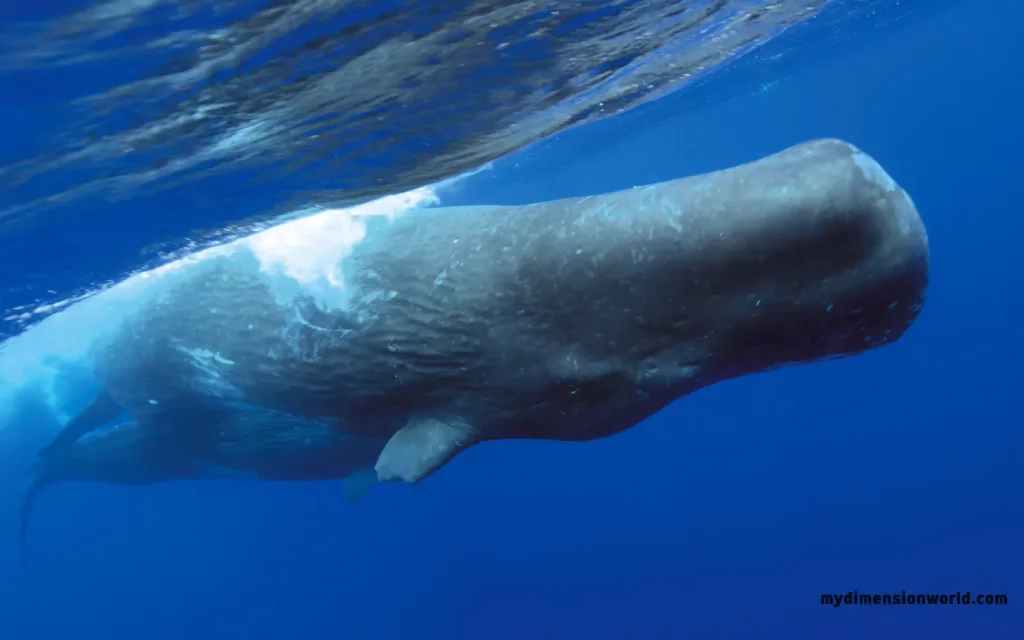

Sperm whales are impressive marine mammals, known for their large heads and long, narrow bodies. These majestic creatures can reach lengths of up to 60 feet.
Sperm whales have a unique feeding strategy, diving to great depths to hunt for giant squid, their primary food source. They have the largest brain of any animal and produce the loudest sound in the animal kingdom.
14. Basking Shark
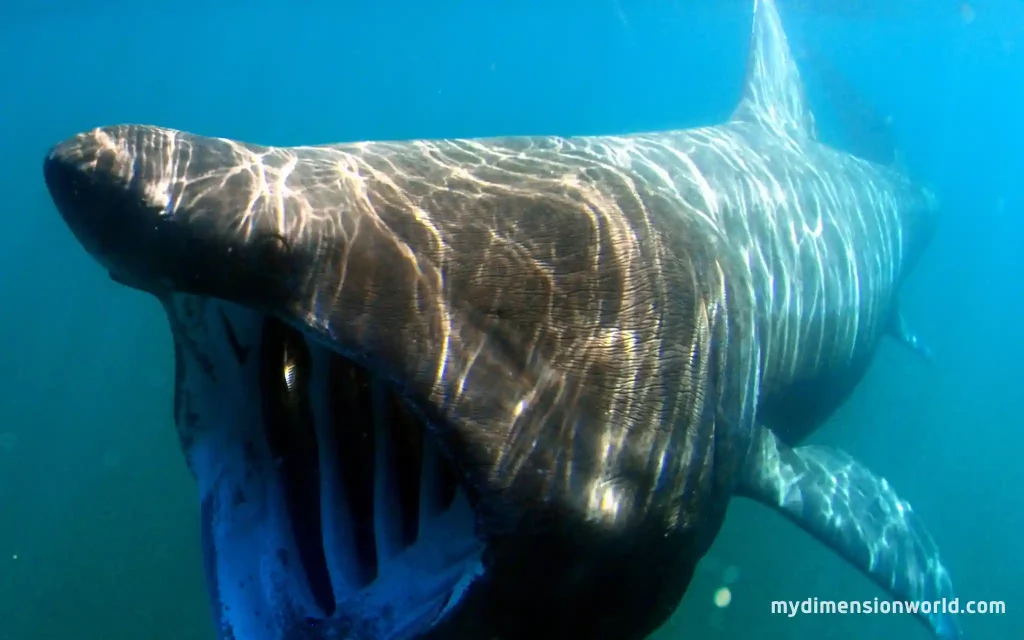

The basking shark is the second-largest fish in the world, capable of growing up to 26 feet long. These gentle filter feeders roam the cooler waters of the North Atlantic and Pacific Oceans, consuming vast amounts of plankton and small fish. Despite their immense size, basking sharks pose no threat to humans.
15. Giant Salamander
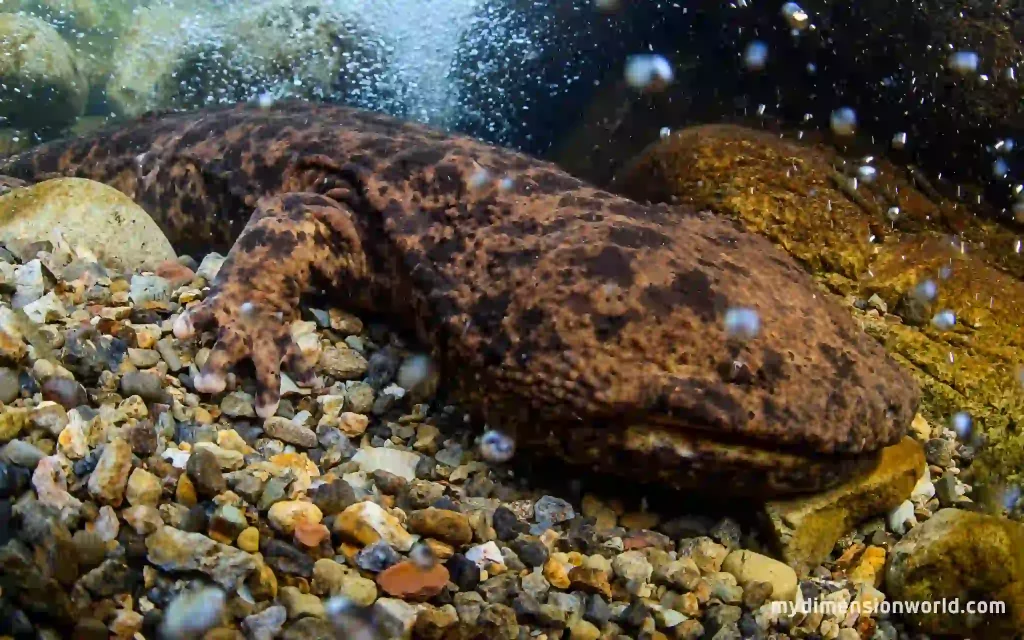

The giant salamander is an intriguing amphibian found in freshwater habitats in East Asia. It is one of the largest salamander species, reaching lengths of approximately 6 feet.
With its stout body and splotchy coloration, the giant salamander is an expert at hiding among rocks and riverbeds. They primarily feed on fish, insects, and crustaceans.
Conclusion
The world’s oceans and other natural bodies of water are home to an astonishing variety of creatures, some of which reach remarkable lengths of about 30 feet. Hope you like this post if so please share this with your friends.

